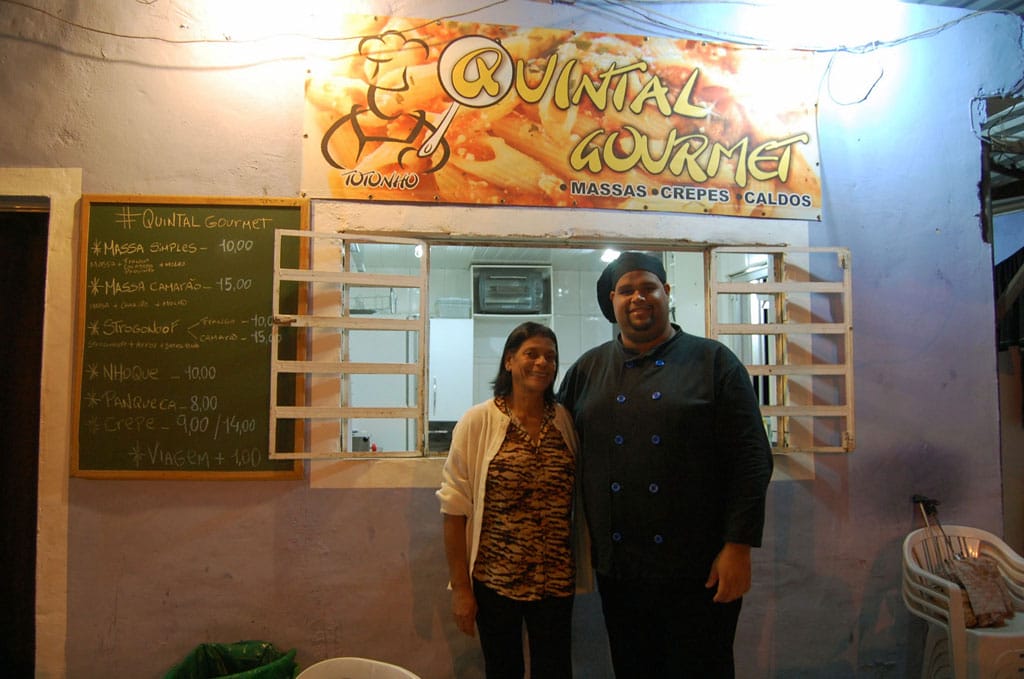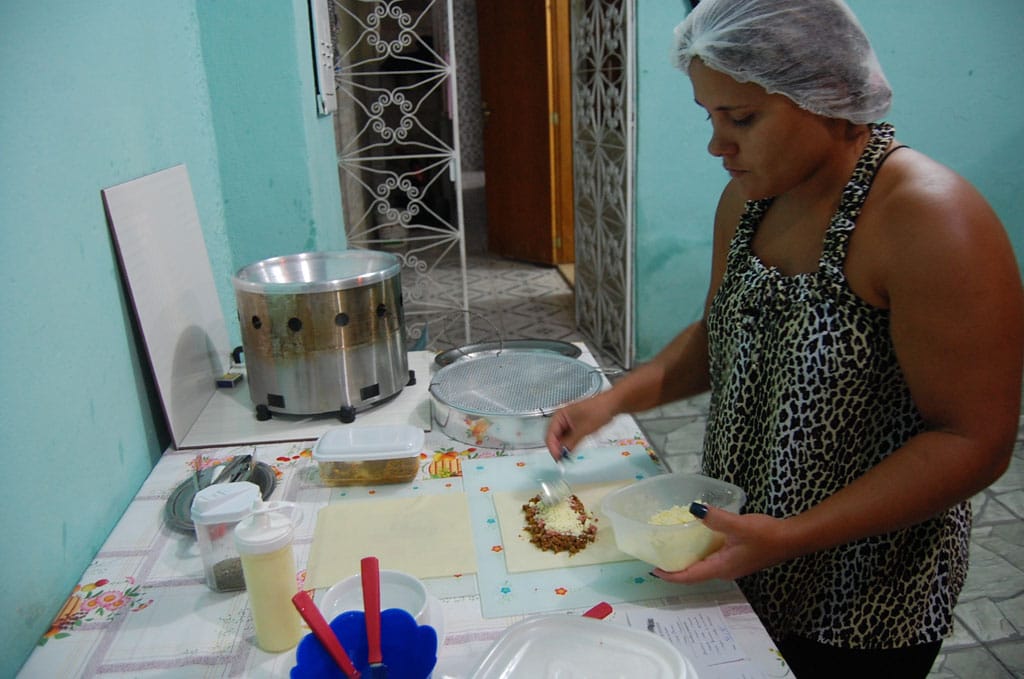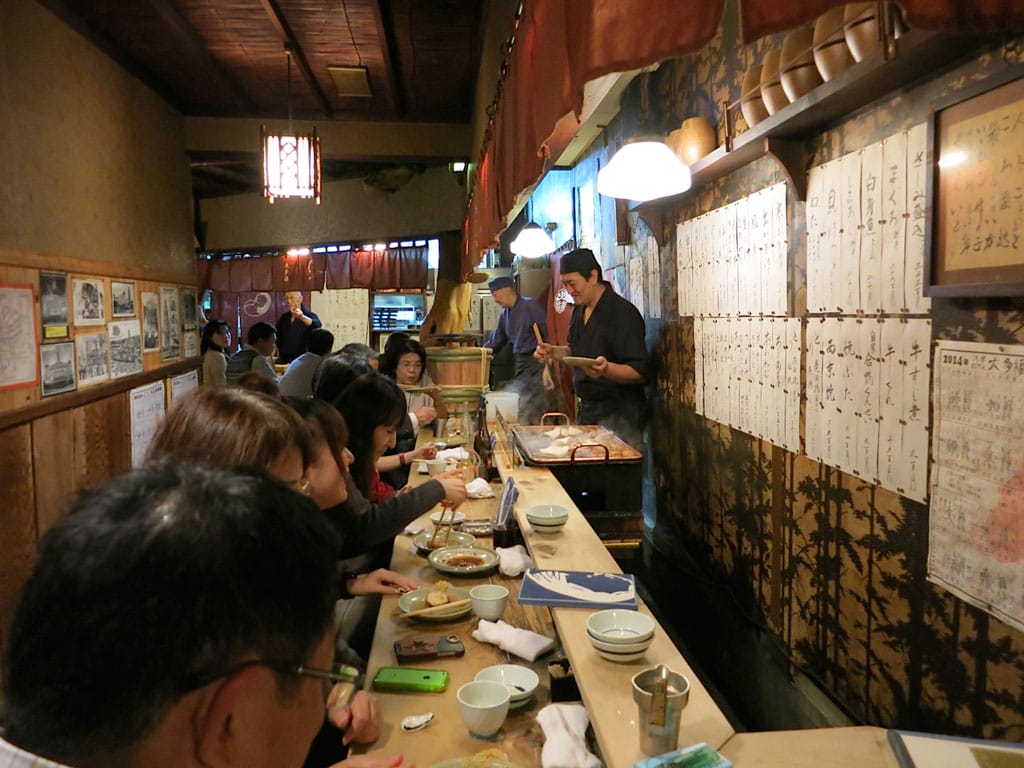Quintal Gourmet is the story of a doting son, one who’s also delighted to be able to spend more time in his home, the City of God. Yes, the one from the movie. Carlos Vinícius, 29, a man as towering as he is smiley, looks at his mother, wiry and fast-talking Joyce, with a doe-eyed affection that seems to be deeply mutual.
“I always followed my mom,” he says.
Before Quintal Gourmet, the two worked as domestic help, with Carlos Vinicíus a caretaker for an elderly woman. When his 72-year-old patroa passed away, he longed to spend more time with his own community rather than leave the favela each day for work.
It went against the traditional logic of Rio, which is that you want to be anywhere but in the favela, where one-fifth of the city’s population lives. But change was afoot in Rio’s most characteristic of neighborhoods, including and especially here, the icon of Rio’s so-called shantytowns (which isn’t the best word for the City of God – we’ll explain).
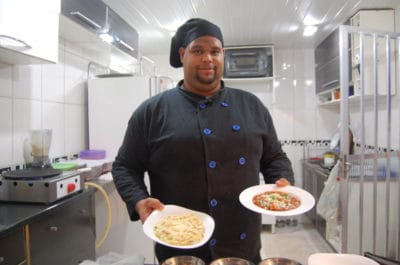 When built in the 1960s, it was a housing project that received poor Brazilians removed from other favelas, often in high-value areas across Rio’s posh South Zone. Strong-willed governor Carlos Lacerda promoted forced relocation of the poor and accepted funds from the U.S. government’s Cold War-era “Alliance for Progress” – meant to stave off socialism in Latin America – to build housing projects across the West and North Zones. Those included cheeky exercises in euphemism like Alliance Villa (Vila Aliança) and Hopefulness Villa (Vila Esperança). One, which now abuts Rio’s most notorious jail, has a replica of the Statue of Liberty inside it and to this day carries the name of its first yanqui benefactor: Vila Kennedy. The City of God got its own dose of ameliorating nomenclature in the religious vein: Plaza of the Prophets, Miracle Road, Mesopotamia Crossing.
When built in the 1960s, it was a housing project that received poor Brazilians removed from other favelas, often in high-value areas across Rio’s posh South Zone. Strong-willed governor Carlos Lacerda promoted forced relocation of the poor and accepted funds from the U.S. government’s Cold War-era “Alliance for Progress” – meant to stave off socialism in Latin America – to build housing projects across the West and North Zones. Those included cheeky exercises in euphemism like Alliance Villa (Vila Aliança) and Hopefulness Villa (Vila Esperança). One, which now abuts Rio’s most notorious jail, has a replica of the Statue of Liberty inside it and to this day carries the name of its first yanqui benefactor: Vila Kennedy. The City of God got its own dose of ameliorating nomenclature in the religious vein: Plaza of the Prophets, Miracle Road, Mesopotamia Crossing.
But those distant colonies meant to house the poor in out-of-sight-out-of-mind suburbs – a housing policy Rio still implements today – didn’t quite follow their planners’ plans. The city grew up and around the City of God, and the housing project se afavelizou, as Brazilians say: it “favelized.” Rio’s West Zone is now the fastest-growing region of the city in terms of population, and the shiny, almost-complete Olympic Park is about a 20-minute drive away.
By the time Carlos Vinícius was setting up shop back home, you could say he was at the back of the pack– hundreds of police had come to “pacify” the community in 2009, and by 2011, none other than Barack, Michelle, Malia and Sasha paid a visit to a school there in a bid to show approval for the local government’s goal of integrating that one-fifth of its population plainly and fully into the formal city.
But if Carlos Vinícius was late to the game, he was in it to win it. The cria of the community, as he calls himself – the word can be translated as cub, or any baby animal and is used in favelas to mean natives born-and-raised – ended his career in eldercare and was eager to get work right where he felt at home: in the kitchen. Joyce said he was the one of her two sons who inherited her knack for cooking. She had even worked in a restaurant, though she never took a course, and cooked as domestic help for a family.
Quintal Gourmet is as delightful as it is incongruous: The quintal (backyard) is Carlos Vinicíus’s concrete patio, with plastic chairs and his mutt, Maria.
The family favorite is pastas and crêpes, which Carlos Vinícius predicted would do well in hamburger- and hot pocket-heavy Cidade de Deus. On nights with a baile, he says he’ll have 60 clients in his quintal.
He pan-sears his crêpes to a photo-worthy golden finish, and his shrimp spaghetti is savory without being too fishy. He recently expanded his menu to add meatballs and beef stroganoff – the Russian dish is wildly popular in Brazil, where it is made with tomato sauce (read: ketchup in many households) and topped with potato straws. Carlos Vinícius prides himself on greasing the wheels of local commerce. His gnocchi is handmade by a senhora in the City of God, and he buys other ingredients from a vendor in Bible Plaza.
Joyce watches over her son’s work in a role between publicist and quality control inspector. She’s watched others in the City of God turn to local commerce in recent years as a way to complement their income, she says. “And people don’t want to have to have a patrão anymore.”
She special-ordered a stylish chef coat with large blue buttons that she frets are coming undone.
“Here I do what I like,” says Carlos Vinícius. “It’s satisfying work.” He’s fully his own boss, he says – along with his mom.
 May 10, 2016 Pastel da Carmen
May 10, 2016 Pastel da Carmen
Carmen and Eduardo’s story could be an allegory for the rise and uh-oh moment of […] Posted in Rio April 1, 2024 Pastiera
April 1, 2024 Pastiera
Like the Proustian madeleine, sweets can stir up all kinds of feelings in the minds of […] Posted in Naples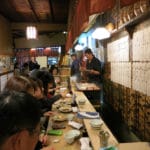 January 15, 2024 Otafuku
January 15, 2024 Otafuku
The weather is turning cold and Japan’s convenience stores, or konbini, have hauled out […] Posted in Tokyo
Published on July 26, 2016
Related stories
See a real side of a favela on our Culinary Soul of Old Rio walk!
May 10, 2016
RioCarmen and Eduardo’s story could be an allegory for the rise and uh-oh moment of Brazil’s new middle class – except their tale is a real one, one that ends with a really nice savory fried pastel that’s become a midnight munchie hit with their neighbors in Rio’s iconic City of God (Cidade de Deus)…
April 1, 2024
NaplesLike the Proustian madeleine, sweets can stir up all kinds of feelings in the minds of those who eat them. In Naples, struffoli (small, round doughnuts glazed with honey) and cassata (sponge cake with ricotta and candied fruit) speak of Christmas, while chiacchiere (sugar-dusted fritters) and sanguinaccio (literally “blood pudding,” but actually made of chocolate)…
January 15, 2024
TokyoThe weather is turning cold and Japan’s convenience stores, or konbini, have hauled out the oden service pans and positioned them next to the cashier counters. For those not familiar with oden, the sight of assorted flotsam and jetsam afloat in a clear broth and the fishy aroma impinging on their space while paying for…







































